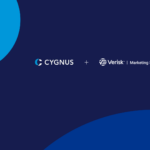Go Beyond the Lead Form: Understanding Consumers in the Mortgage Market Slowdown
By the end of August, mortgage rates climbed back up to the record high rates the U.S. saw in July 2022, causing demand to fall even further and leaving lenders hungry for mortgage business. Fannie Mae recently reported that surging mortgage rates will likely cause home sales to continue to fall in the coming months.
Verisk Marketing Solutions’ SVP of Corporate Development and UK Expansion, Rob Rokoff, shared with the MReport that in response to the volatile market, mortgage marketers are leaning heavily on lead providers to supply a steady volume for retail and consumer direct channels.
Rates aren’t the only dynamic factor here, as consumers attributes are also rapidly changing – income, occupation, car ownership, marital status, and even their preferred email address for social media.
Verisk Marketing Solutions knows that first hand, as we can see that consumers are continuing to change their behaviors and attributes faster than they did pre-pandemic. In 2019 and before, companies could expect 30% of their CRM would decay over the course of a year. That number jumped as high as 38% in 2020 and continues to be above 30% in 2022, which makes it harder for companies today to effectively market to an individual over time.
While potential homebuyers are putting their dreams of homeownership on hold due to rising rates, institutional investors have kept themselves busy in recent months.
A study by the National Association of Realtors (NAR) research group in May 2022 examined the market share of institutional buyers to total home sales using property deed records. The NAR’s comprehensive report, which you can read in full here, reveals the factors that attract institutional investors to a particular market, the motivation for home sellers to sell to institutional buyers, the impact of institutional investors on home and rent prices, and more. Check out some of the highlights of this study below:
Institutional buyers, defined as companies, corporations, and LLCs, made up 13% of the residential sales market in 2021, up from 11.8% in 2020.
Institutional investors held a higher share of the market in areas where the number of homes for sale was becoming tighter. Texas (28%), Georgia (19%), Oklahoma (18%), and Alabama (18%) had the highest percent of purchases by institutions.
Institutional buyers tend to purchase property in areas with strong rental markets, high income markets, and with a high density of minority groups, especially Black households.
According to the study, in counties that have more investors than nationwide averages, there are twice as many Black households as in the areas with lower investor representation. Some other factors that attracted institutions to any given market were a high density of millennial households, fast rent growth, fast home appreciation, fast home sales, and lower rental vacancy rates.
Verisk Marketing Solutions’ Market Leader for Banking and Mortgage, Natalie Mullen, shared in a recent article for HousingWire that for lenders, millennials are the consumers to watch in 2022. Now more than ever, lenders need to understand not only the state of the market (institutional buyers included), but the services that consumers need. With the trend of younger Americans purchasing expensive homes set to continue, lenders should recognize the untapped opportunity to serve this group as they enter a phase filled with major life purchases, and how to create valuable long-term customers within this demographic.
Realtors say institutional buyers are favored due to having cash offers that are available immediately with “As Is” sales.
The REALTORS® survey showed that, on average, the offer price of institutional buyers was about the same as non-institutional buyers. Institutions would offer prices at times below the market price or at times above the market price, given that institutional investors purchase a mix of properties.
Despite the industry slowdown, lots of people are still moving.
It’s critical for companies trying to attract and convert potential movers to have a deep understanding of that individual – beyond what’s captured in a lead form or what’s been stored for years in a CRM – to provide a targeted and operationally efficient acquisition workflow. This makes the need for third party identity and behavioral data ever more critical. Verisk Marketing Solutions can get you there. Let us show you how.
Find this interesting? Make sure you’re subscribed to V!AView, our monthly newsletter that offers the most up-to-date insights from our market leaders and experts.








 Your Privacy Choices for Platform Services | Data Services
Your Privacy Choices for Platform Services | Data Services